Swiss KOF Economic Barometer dropped slightly from 111.0 to 110.7 in October, better than expectation of 108.0. KOF said: “Indicator bundles of the food and beverage industry have improved clearly and are contrasted by declines in indicator bundles of manufacturing, the economic sector other services, foreign demand and the financial and insurance services, resulting in an almost unchanged overall movement.”
France GDP grew 3.0% qoq in Q3, almost back to pre-crisis level
France GDP rose 3.0% qoq in Q3, above expectation of 2.4% qoq. GDP has almost returned to pre-crisis level, just -0.1% below Q4 2019 level.
Final internal demand (excluding inventory changes) contributed positively to GDP growth this quarter (+3.3 points, after +1.5 points in Q2): in particular, households’ consumption expenditure accelerated very strongly (+5.0% after +1.3%), and contributed for +2.5 points to GDP growth this quarter. Gross fixed capital formation (GFCF) was almost stable (-0.1% after +2.5% in the previous quarter).
Exports accelerated this quarter (+2.3% after +1.2% in the previous quarter) while imports were stable (–0.1% after +1.7%). Foreign trade remained largely below its pre-crisis level, but its contribution to GDP growth was positive this quarter: +0.6 points, after –0.2 points in the previous quarter. Finally, the contribution of inventory changes to GDP growth was negative this quarter (–0.9 points after +0.0 points in the previous quarter).
Australia retail sales rose 1.3% mom in Sep, vary by state
Australia retail sales rose 1.3% mom in September, much better than expectation of 0.2% mom. That’s the first monthly growth since May. For the 12-month, sales rose 1.7% yoy.
“Retail turnover continues to vary by state, based on whether restrictions were imposed, removed or extended. Queensland sales rose to their highest level ever, up 5.2 per cent, with no lockdowns in September,” Ben James, Director of Quarterly Economy Wide Statistics said.
“New South Wales also experienced a rise of 2.3 per cent despite having lockdowns, as some restrictions were eased or lifted. However, turnover for New South Wales remains 11.9 per cent lower than May 2021, the month before the most recent lockdown began.”
Also released, PPI came in at 1.1% qoq, 2.9% qoq in Q3, versus expectation of 0.6% qoq, 3.2% yoy. Price sector credit rose 0.6% mom in September, matched expectations.
Japan industrial production dropped -5.4% mom in Sep, but expected to bounce back strongly ahead
Japan industrial production dropped sharply by -5.4% mom in September, much worse than expectation of -2.4% mom. The seasonally adjusted index of production at factories and mines dropped for the third straight month to 89.5, against the 2015 100 base of 100.
But looking ahead, the Ministry of Economy, Trade and Industry said output would bounce back by 6.4% in October, and then 5.7% in November, based on a poll of manufacturers. An official said, “output may have hit bottom in September since economic activities have been returning to normal in countries such as Vietnam and Malaysia since late September, and a recovery is expected, mainly in the auto industry.”
Also released, unemployment was unchanged at 2.8% in September, matched expectations. Housing starts rose 4.3% yoy, versus expectation of 7.5% yoy. Consumer confidence dropped to 39.2, below expectation of 40.4. In October, Tokyo CPI core was unchanged at 0.10% yoy, below expectation of 0.3% yoy.
US GDP grew 2.0% annualized in Q3, missed expectations
US GDP grew 2.0% annualized in Q3, below expectation of 2.6%. The increase in real GDP in the third quarter reflected increases in private inventory investment, personal consumption expenditures (PCE), state and local government spending, and nonresidential fixed investment that were partly offset by decreases in residential fixed investment, federal government spending, and exports. Imports, which are a subtraction in the calculation of GDP, increased.
US initial jobless claims dropped to 281k, continuing claims down to 2.24m
US initial jobless claims dropped -10k to 281k in the week ending October 23, slightly better than expectation of 289k. That’s the lowest level since March 14, 2020. Four-week moving average of initial claims dropped -21k to 299k, lowest since March 14, 2020 too.
Continuing claims dropped -237k to 2243k in the week ending October 16, lowest since March 14, 2020. Four-week moving average of continuing claims dropped -142k to 2513k, lowest since March 21, 2020.
ECB stands pat, continues PEPP with moderately lower pace
ECB kept monetary policy unchanged as widely expected. The interest rates on the marginal lending facility and the deposit facility will remain unchanged at 0.00%, 0.25% and -0.50% respectively. The forward guidance is maintained.
That is, “the Governing Council expects the key ECB interest rates to remain at their present or lower levels until it sees inflation reaching two per cent well ahead of the end of its projection horizon and durably for the rest of the projection horizon, and it judges that realised progress in underlying inflation is sufficiently advanced to be consistent with inflation stabilising at two per cent over the medium term. This may also imply a transitory period in which inflation is moderately above target.”
PEPP purchases will continue with a total envelop of EUR 1850B, until at least end of March 2022. The pace of net asset purchases will remain “moderately lower” than in Q2 and Q3. APP purchases will continue at a monthly pace of EUR 20B too.
Eurozone economic sentiment indicator rose to 118.6, EU ESI rose to 117.6
Eurozone Economic Sentiment Indicator rose to 118.6 in October, up from 117.8, above expectation of 116.9. Employment Expectations Indicator rose from 113.4 to 114.5. Industrial confidence rose from 14.1 to 14.2. Services confidence rose from 15.2 to 18.2. Consumer confidence dropped from -4.0 to -4.8. Retail trade confidence rose from 1.4 to 2.0. Construction confidence rose from 7.5 to 8.9.
EU ESI rose from 116.6 to 117.6. Amongst the largest EU economies, the ESI rose in Spain (+2.5), France (+2.1), Italy (+1.8), Poland (+1.5) and the Netherlands (+1.4), while it weakened slightly in Germany (-0.5).
BoJ Kuroda: Yen’s recent weakening is definitely positive
In the post meeting press conference, BoJ Governor Haruhiko Kuroda said, “the yen’s recent weakening, as a whole, is definitely positive for Japan’s economy. It’s good for exports and lifts the yen-based profits firms earn overseas. It more than offsets the negative impact from rising import costs.”
“At present, currency rates are moving in line with fundamentals,” he said. “I therefore see no problems with the moves”. He added, “there’s no pre-set norm on the desirable level of real, effective exchange rates. I won’t comment on specific levels.”
“In the long run, if growth accelerates and the output gap turns positive, we’ll likely see inflation accelerate and heighten inflation expectations,” Kuroda said. “Under current conditions, there are more merits than demerits in maintaining ultra-loose monetary policy.”
ECB to stand pat, some previews
ECB is widely expected to keep monetary policy unchanged today. The central bank might shed some light on asset purchases after the end of the emergency program PEPP next March. But the details on what to follow will only be revealed at the December meeting, together with new economic projections. There are some expectations that the flexibility of the original APP would be increased, but this is far from being certain.
There are also speculations of an earlier rate hike, with market pricing it to happen by 2022 year end. But President Christine Lagarde would likely talk down such expectations. Instead, ECB would just reiterate that the policy rates would “remain at their present or lower levels until it sees inflation reaching 2% well ahead of the end of its projection horizon and durably for the rest of the projection horizon and judges that realized progress in underlying inflation is sufficiently advanced to be consistent with inflation stabilizing at 2% over the medium term”.
Some previews on ECB:
Markets expect earlier RBA rate hike as it let yield surge
Australian bond yields surge sharply today after RBA skipped the asset purchases to defend the 0.10% April 2024 yield target. Yield on April 2024 AGS more than doubled to above 0.5%. Meanwhile, 3-year AGS yield extended recent rally and accelerated to as high as 1.19%.
The development prompted speculations that RBA would change its forward guidance to indicate that conditions for rate hike could come earlier than 2024. Westpac said it now confirm its expectation that RBA hike would come in February 2023. CBA is expecting a November 2022 hike while ANZ is forecasting a hike in H2 of 2023.
Separately, RBA Deputy Governor Guy DeBelle told the Senate today, “the monetary policy settings we have in place, as do other central banks around the world, are looking to generate a little higher inflation than we have seen over the last five, six years, as well generate more jobs.” Nevertheless, he added, “a little bit more inflation is welcome, a lot more inflation isn’t.”
BoJ stands pat, downgrades 2021 GDP and CPI forecasts
BoJ kept monetary policy unchanged today as widely expected. Under the yield curve control framework, short-term policy interest rate is held at -0.1%. 10-year yield target is maintained at around 0%, with JGB purchases without upper limit. It also reiterated that BoJ will continue with QQE with YCC “as long as it is necessary” for maintaining inflation at 2% target in a stable manner. It will also continue expanding the monetary base core CPI exceeds 2% and stays above in a stable manner.
Economic projections comparing to July forecast:
- Fiscal 2021 GDP growth downgraded from 3.8% to 3.4%.
- Fiscal 2022 GDP growth upgraded from 2.7% to 2.9%.
- Fiscal 2023 GDP growth unchanged at 1.3%.
- Fiscal 2021 CPI core downgraded from 0.6% to 0.0%.
- Fiscal 2022 CPI core unchanged at 0.9%.
- Fiscal 2023 CPI core unchanged at 1.0%.
EUR/CAD downside breakout after BoC, GBP/CAD to follow?
Canadian Dollar jumps broadly after surprisingly hawkish BoC policy decision. USD/CAD and CAD/JPY are still bounded in range. But EUR/CAD is taking the lead with downside breakout.
The break of 1.4317 in EUR/CAD suggests resumption of fall from 1.5096. More importantly, it’s now resuming the medium term down trend. Sustained trading below 1.4317 will confirm the breakout and pave the way to 100% projection of 1.5783 to 1.4580 from 1.5096 at 1.3839. In any case, outlook will stay bearish as long as 1.4439 resistance holds, even in case of recovery.
GBP/CAD will be a focus now too as it’s diving towards 1.6889 support. Firm break there will resume the fall from 1.7623, and the decline from 1.57784 too. 100% projection of 1.7884 to 1.6849 from 1.7623 at 1.6588 will be next target.
BoC ends QE, could lift rates in middle quarters next year
BoC surprisingly announced to end quantitative easing today, and move to the reinvestment phase. That’s ahead of market expectation of tapering today and ending QE in December. Overnight rate is held at effective lower bound of 0.25%, bank rate is kept at 0.50% and deposit rate at 0.25%.
Regarding forecast guidance, BoC reiterated that its “remain committed to holding the policy interest rate at the effective lower bound until economic slack is absorbed so that the 2 percent inflation target is sustainably achieved.”
Now, BOC expects this to happen “sometime in the middle quarters of 2022″, ahead of September’s guidance of ” the second half of 2022.”
US durable goods orders dropped -0.4% mom in Sep, ex-transport orders rose 0.4% mom
US durable goods orders dropped -0.4% mom to USD 261.3B in September, better than expectation of -1.1% mom. Ex-transport orders rose 0.4% mom, matched expectations. Ex-defense orders dropped -2.0% mom. Transportation equipment dropped -2.3% to USD 77.7B.
Also released, goods trade deficit came in at USD -93.6B in September, smaller than expectation of USD -88.2B. Goods exports dropped USD -7B to USD 142.2B. Goods imports rose USD 1.1B to USD 238.4B. Wholesale inventories rose 1.1% mom to USD 739.5B. Retail inventories dropped -0.2% mom to USD 602.9B.
Germany downgrades 2021 growth forecast to 2.6%, upgrades 2022 to 4.1%
German government cut 2021 economic growth forecast sharply to just 2.6%, comparing to April’s expectation of 3.5%. Economy Minister Peter Altmaier said the downgrade was partly due to supply bottlenecks and rising energy prices, particularly for gas.
Nevertheless, for 2022, growth forecast was upgrade from 3.6% to 4.1%, as the supply bottlenecks ease. Growth is expected to normalize to 1.6% in 2023.
“The precondition is that we stabilize international supply chains, and, for example, make sure that more of the chips are produced that are built into almost every device, especially cars,” Altmaier said earlier in an interview with ARD television.
Germany Gfk consumer sentiment rose to 0.9, defying increasing inflation
Germany Gfk consumer sentiment for November rose to 0.9, up from 0.4, above expectation of -0.4. For October, economic expectations dropped from 48.5 to 46.6. Income expectations dropped sharply from 37.4 to 23.3. Propensity to buy rose from 13.4 to 19.4.
“This second increase to consumer sentiment in a row defies increasing inflation. German citizens are clearly expecting further price increases. That is why they consider to make purchases, in order to avoid even higher prices”, explains Rolf Bürkl, GfK consumer expert. “If the surge in prices continues, it would put a strain on consumer sentiment and a fundamental recovery would likely be further delayed.”




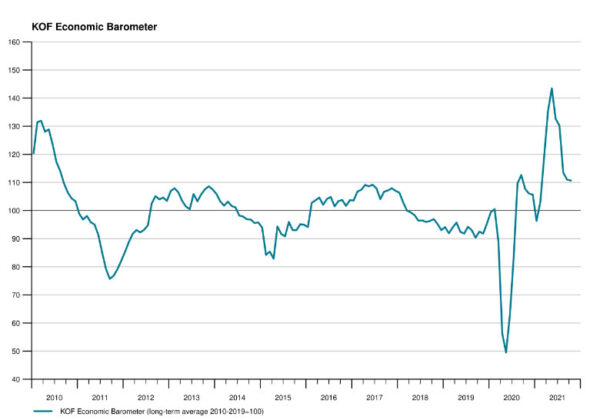
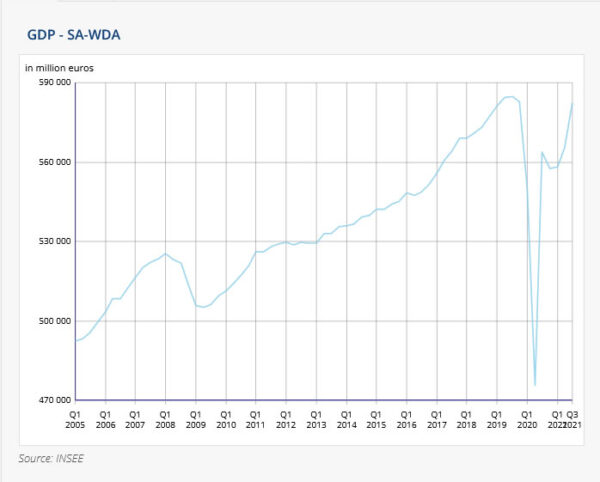

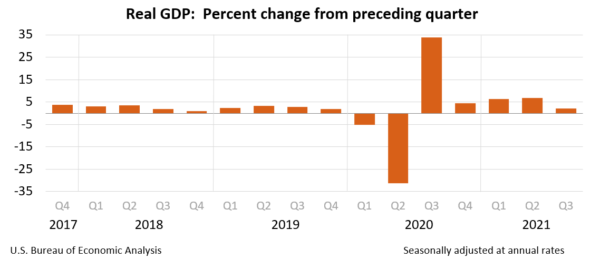
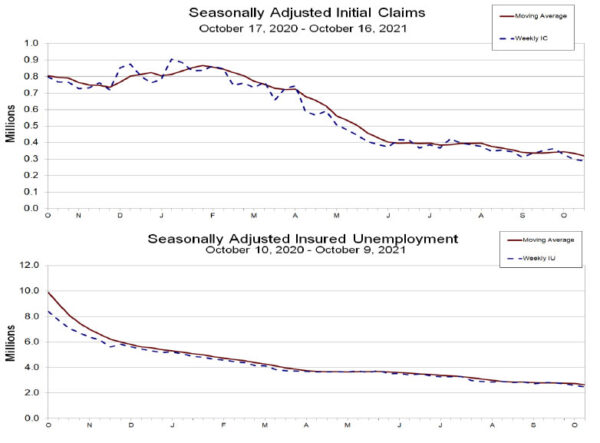

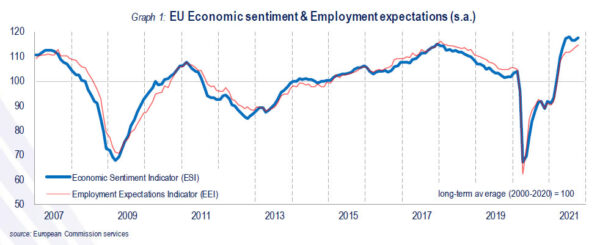
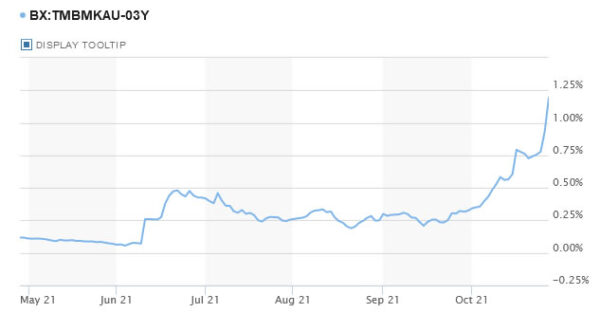
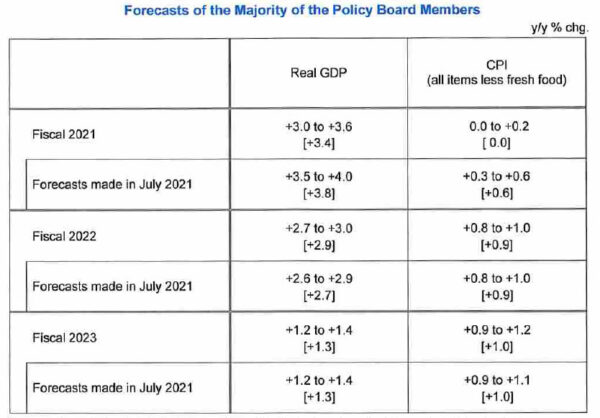
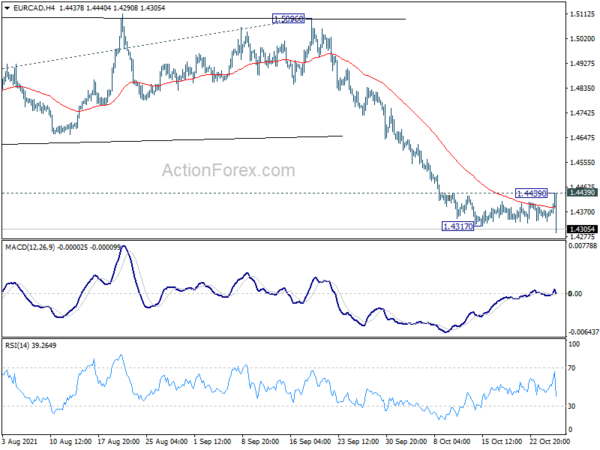

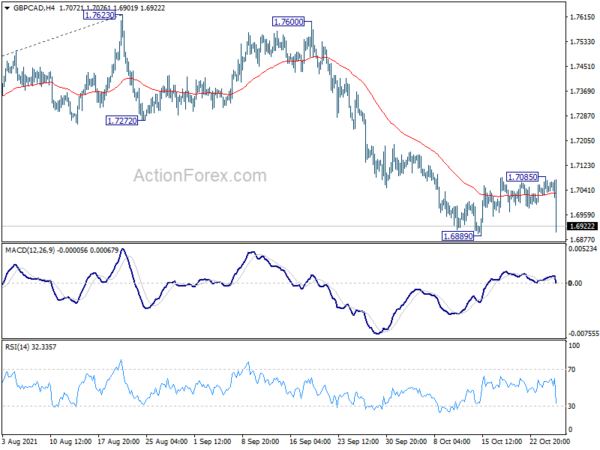
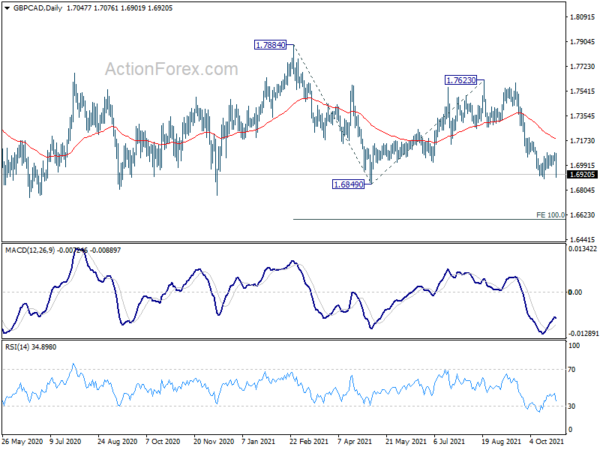
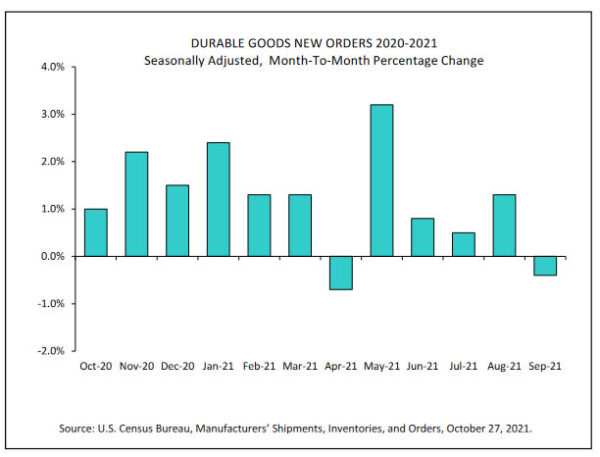
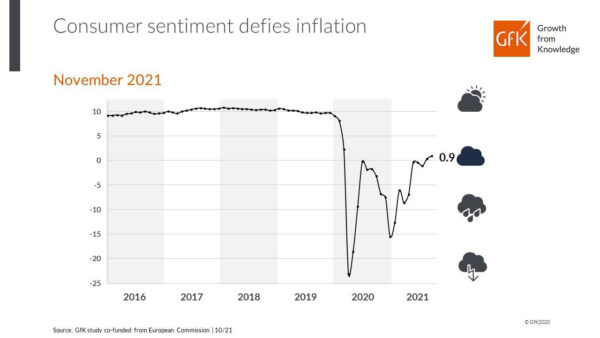

Germany GDP grew 1.8% qoq in Q3, below expectations
Germany GDP grew only 1.8% qoq in Q3, below expectation of 2.2% qoq. Overall GDP was still -1.1% lower (price-, seasonally and calendar-adjusted) than in the fourth quarter of 2019, the quarter before the coronavirus crisis began.
Full release here.